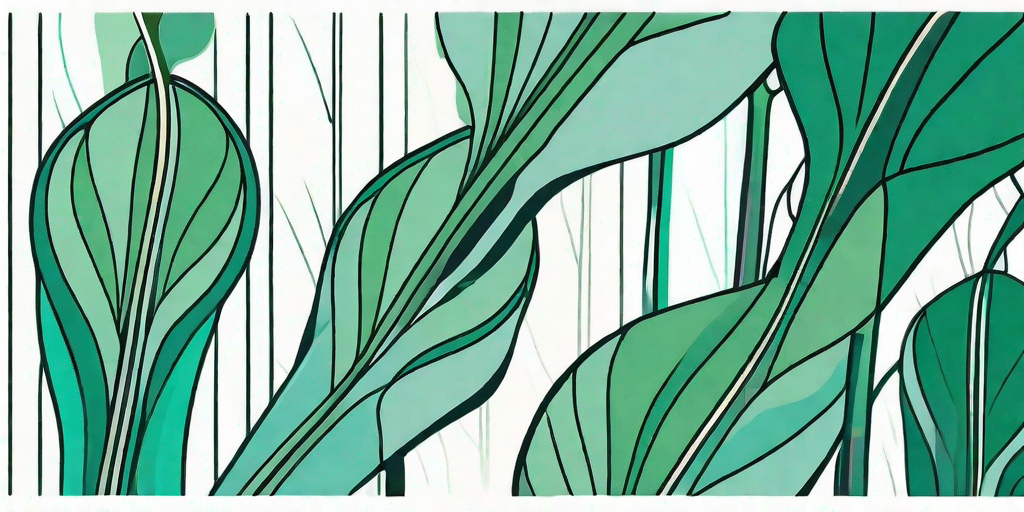
Ladies and gentlemen, plant enthusiasts and curious readers, today we're going to embark on a journey into the world of a rather peculiar plant. A plant that's as intriguing as its name - the Dutchman's Pipe. No, it's not a pipe from the Netherlands, nor is it a smoking device. It's a plant, a beautiful, mysterious, and downright fascinating plant. So, buckle up, because we're about to dive deep into the world of this floral wonder.
The Intriguing Origin of the Dutchman's Pipe
Before we delve into the nitty-gritty, let's take a moment to appreciate the origin of this unique plant. The Dutchman's Pipe, scientifically known as Aristolochia, belongs to the family Aristolochiaceae. It's a large plant family with over 500 species. Talk about a big family reunion! But why the name Dutchman's Pipe, you ask? Well, the flowers of this plant resemble a traditional Dutch smoking pipe. And there you were thinking botanists didn't have a sense of humor!
These plants are native to the tropical and subtropical regions of South America, Asia, and Africa. So, if you're planning to grow one in your backyard in Alaska, you might want to reconsider. But don't fret, we'll get to the how-tos of growing a Dutchman's Pipe in a bit.
Characteristics of the Dutchman's Pipe
Now, let's talk about what makes the Dutchman's Pipe so special. For starters, it's not your typical flower. The flowers are pipe-shaped (hence the name), and they come in a variety of colors, from green to purple to red. They're like the chameleons of the plant world!
But the real kicker is the smell. You see, Dutchman's Pipe flowers emit a scent that's, well, not exactly rosy. The smell is often likened to rotting meat. Yikes! But don't worry, it's not a ploy to keep you away. The smell actually attracts flies and beetles, which help in pollination. Nature sure has a weird sense of humor, doesn't it?
How to Grow a Dutchman's Pipe
Alright, now that we've covered the basics, let's get down to business. How do you grow a Dutchman's Pipe? Well, it's not as hard as you might think. These plants are pretty hardy and can tolerate a range of conditions. But there are a few things you need to keep in mind.
Firstly, Dutchman's Pipe plants love the sun. So, make sure you plant them in a spot that gets plenty of sunlight. Secondly, they need well-drained soil. Nobody likes soggy feet, not even plants! Lastly, these plants are climbers, so they'll need something to climb on, like a trellis or a fence.
Step-by-Step Guide to Growing a Dutchman's Pipe
- Choose a sunny spot in your garden.
- Prepare the soil by adding compost or organic matter.
- Plant the Dutchman's Pipe seeds or cuttings.
- Water the plant regularly, but make sure the soil is well-drained.
- Provide a support for the plant to climb on.
- Watch as your Dutchman's Pipe grows and flourishes!
The Dutchman's Pipe and Its Role in Nature
Now, you might be wondering, what's the point of a plant that smells like rotting meat? Well, aside from its unique beauty, the Dutchman's Pipe plays a crucial role in nature. It's a host plant for several species of butterflies, providing a safe place for them to lay their eggs and for their caterpillars to feed on. So, by growing a Dutchman's Pipe, you're not just adding a unique plant to your garden, you're also contributing to the ecosystem. How's that for a win-win?
Moreover, some species of Dutchman's Pipe have medicinal properties and have been used in traditional medicine for centuries. However, it's important to note that some species can be toxic if ingested, so it's best to admire them from a distance and leave the medicinal uses to the professionals.
Frequently Asked Questions About the Dutchman's Pipe
Why does the Dutchman's Pipe smell bad?
The Dutchman's Pipe emits a foul smell to attract flies and beetles for pollination. It's a clever trick of nature!
Can I grow a Dutchman's Pipe indoors?
Yes, you can grow a Dutchman's Pipe indoors, provided it gets enough sunlight and has something to climb on.
Is the Dutchman's Pipe toxic?
Some species of Dutchman's Pipe can be toxic if ingested, so it's best to keep them out of reach of children and pets.
Conclusion
And there you have it, folks! The Dutchman's Pipe is indeed a floral wonder, with its unique shape, intriguing smell, and important role in nature. It's a plant that's sure to add a touch of mystery and beauty to your garden. So, why not give it a try? After all, life's too short for boring plants!
Remember, the world of plants is full of surprises, and the Dutchman's Pipe is just one of them. So, keep exploring, keep learning, and most importantly, keep growing. Until next time, happy gardening!















